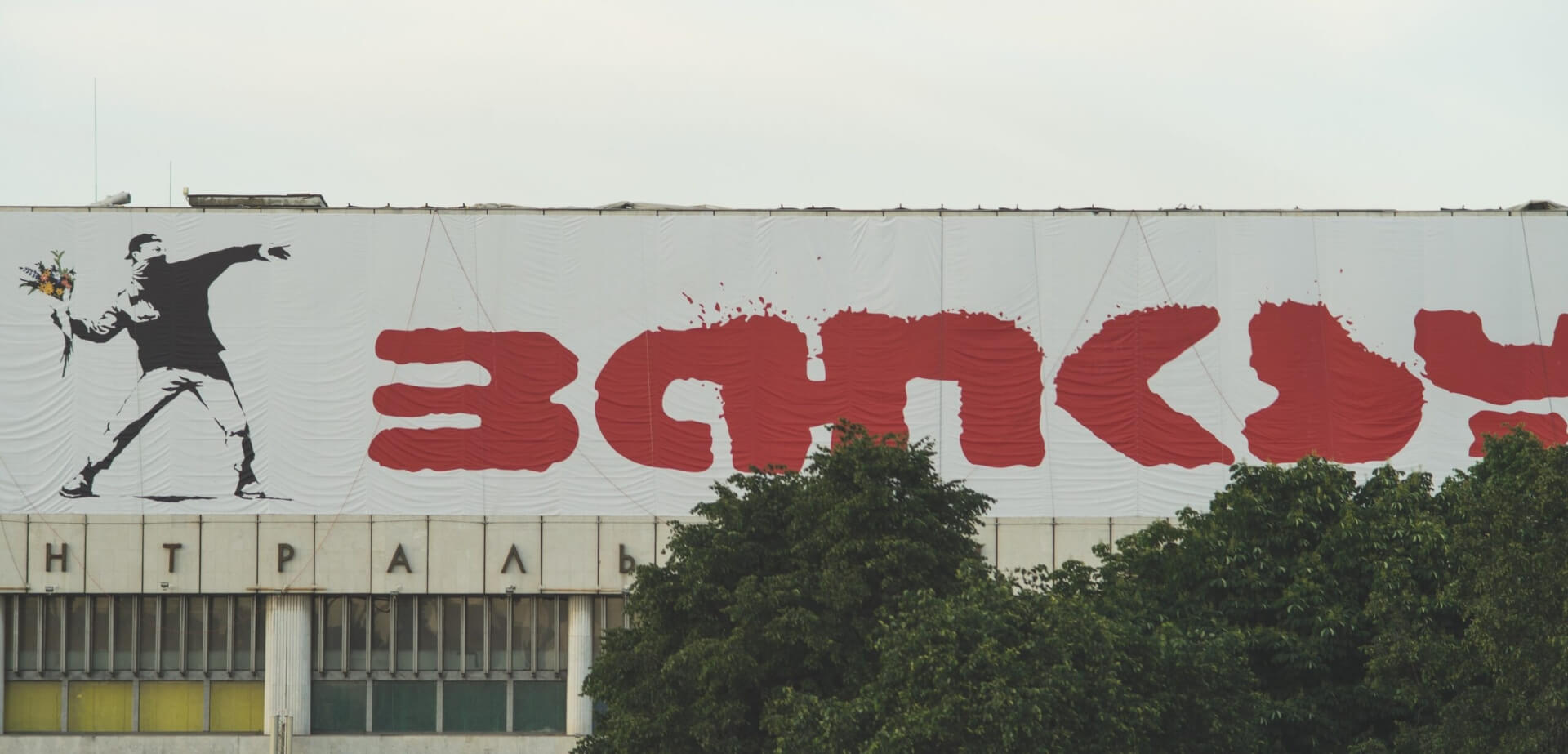
The world’s most high-profile street artist. Everyone has heard of Banksy and has seen his art, but no one knows who he really is. Infamous for his anonymity and mystery, Banksy’s satirical street art ranges from comical to controversial to political. Banksy’s ability to remain anonymous in this digital/social media age is nothing short of impressive – though, the artist’s anonymity has started causing problems recently in terms of his ability to protect his artwork – aaaaand let us not forget that graffiti is illegal so staying anonymous was not really much of a choice for Banksy!
Banksy’s work is distinct and defined by his anonymity – only a small number of the artist’s works are officially and non-publicly sold – these have previously gone for millions of pounds Earlier this year, one of Banksy’s artworks titled ‘Game Changer’, portraying a young boy in overalls playing with a nurse doll wearing a Red Cross uniform and a face mask, broke the artists own previous record for being the most expensive work to sell at an auction. This piece of work, which sold for £16.8 million paid homage to the heroes of the pandemic and all the sale proceeds went towards the NHS and other health charities. However, the majority of Banksy’s artwork is displayed in public places on walls and streets and these public installations have been regularly resold and incorporated onto different kinds of merchandise including cards, mugs and sweatshirts.
Unlike Banksy, most artists rely on copyright to protect their work but in order to enforce copyright, the rightsholder must evidence a chain of creation back to the original artist. Therefore, for artists seeking to remain anonymous such as Banksy, copyright protection is not very useful. Banksy has also previously stated that “copyright is for losers” and has not been a great advocate of intellectual property right protection. However Banksy was forced to ‘eat his own words’ upon discovering that English card company, Full Colour Black, was using his artwork on greetings cards and subsequently Banksy sought to register EU trademarks for his most famous artworks through his company Pest Control Office Limited.
In November 2019, Full Colour Black formally opposed Banksy’s trademark for the “Flower Thrower”, claiming that it was filed in bad faith and that it was non-distinctive. The card company claimed that the art is a work of graffiti sprayed in a public place—and the EUIPO agreed. They stated that “It was free to be photographed by the general public and has been disseminated widely,” and “Banksy permitted parties to disseminate his work and even provided high-resolution versions of his work on his website and invited the public to download them and produce their own items” – the ruling against Banksy continued.
The ruling also noted that the street artist explicitly stated that the public is morally and legally free to reproduce, amend, and otherwise use any copyright works forced upon them by third parties. The artist has known for years that his works are widely photographed and reproduced by a range of third parties without there being any commercial connection between these parties and Banksy, the EU office found.
The essential function of a trademark is to define the origin of its owner’s goods or services. Full Colour Black argued that Banksy’s works lacked distinctiveness and that they were not filed with the intention of being used as a brand, therefore, they were filed in bad faith. In assessing this – the EUIPO reviewed Banksy’s actions in 2019 when he set up a pop-up shop in Croydon called Gross Domestic Product. He stated “I’ve been making stuff for the sole purpose of fulfilling trademark categories under EU law”, and that this was “not a very sexy muse”. The EUIPO found that Banksy had only opened the shop for the purpose of preserving the marks’ validity and that it was therefore not evidence of good faith filings and that the marks were invalid for bad faith.
Another factor that played into this ruling was the fact that Banksy’s true identity remains a mystery. The ruling noted that “as Banksy has chosen to be anonymous and cannot be identified – this would hinder him from being able to protect this piece of art under copyright laws without identifying himself, while identifying himself would take away from the secretive persona which propels his fame and success,”. The ruling acknowledged the connection between Banksy and his company Pest Control but found that “the evidence is not exhaustive in this regard as the identity of Banksy cannot be legally determined.”.
Since then, in a series of decisions since September 2020, the EUIPO has invalidated a total of six of Pest Control’s trademarks, for the artworks Flower Thrower, Laugh Now, and, more recently, in the last few days, Radar Rat, Love Rat, Girl with an Umbrella and Bomb Hugger.